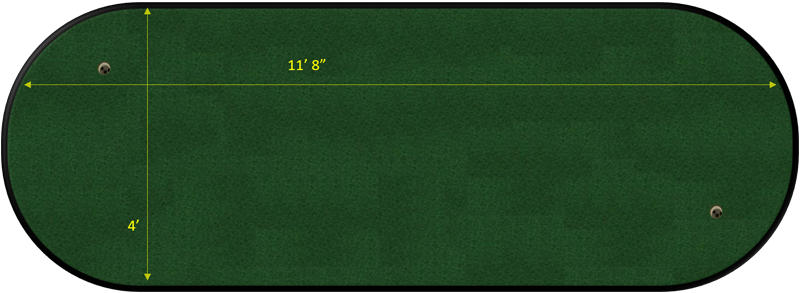A New Era for Collegiate Golf: The Rise of Indoor Golf Facilities on Campus
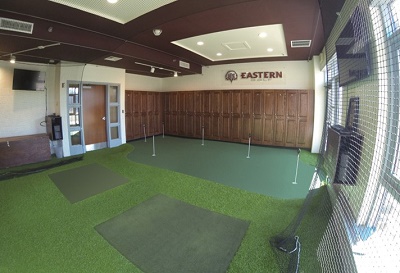
In recent years, indoor college golf facilities have become a cornerstone of many collegiate athletic programs, transforming how student-athletes train and compete year-round.
Once viewed as a luxury, these high-tech, climate-controlled environments are now a key component of competitive collegiate golf programs across the country.
From golf simulators and putting labs to custom swing bays and fitness centers, these spaces redefine what it means to train for golf at the collegiate level.
Year-Round Practice, Regardless of Weather
One of the most significant advantages of college indoor golf facilities is the ability to practice year-round, no matter the weather. An indoor facility ensures consistent training opportunities for schools located in colder climates—where snow, rain, and freezing temperatures can limit outdoor practice for several months.
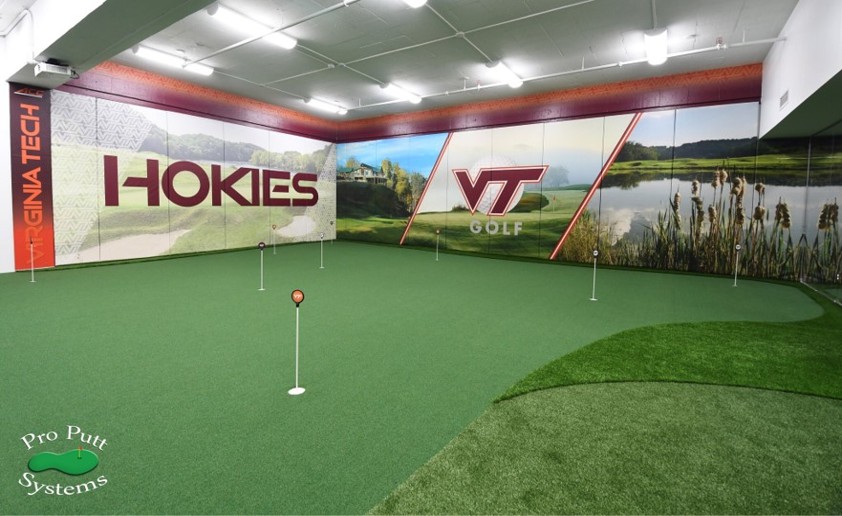
Programs at northern schools like Virginia Tech (above), Penn State, the University of Michigan, and the University of Minnesota have invested heavily in indoor centers to close the gap with southern schools that enjoy near year-round outdoor golf. These facilities allow players to stay sharp during the off-season and hit the ground running when the spring tournament season begins.
Advanced Technology Elevating the Game
Modern indoor golf facilities are not just about hitting balls into a net. They are equipped with cutting-edge technology that gives players and coaches access to performance data that was once reserved for professional-level training.
Launch monitors like TrackMan, Foresight Sports GCQuad, and FlightScope are now staples in most indoor facilities. These devices provide real-time data on club path, ball speed, launch angle, spin rate, and more—allowing players to make immediate adjustments to their swing mechanics. High-speed cameras and motion-capture systems also offer detailed visuals for in-depth swing analysis.
Putting studios, often featuring SAM PuttLab or Quintic Ball Roll, help players fine-tune their putting stroke with scientific precision. These tools track everything from face angle and stroke path to tempo and ball roll characteristics.
AI Putting Simulations, like TourPutt, can coach a player digitally. Based on the feedback learned from your training sessions, TourPutt will suggest drills and putter-fitting tweaks!
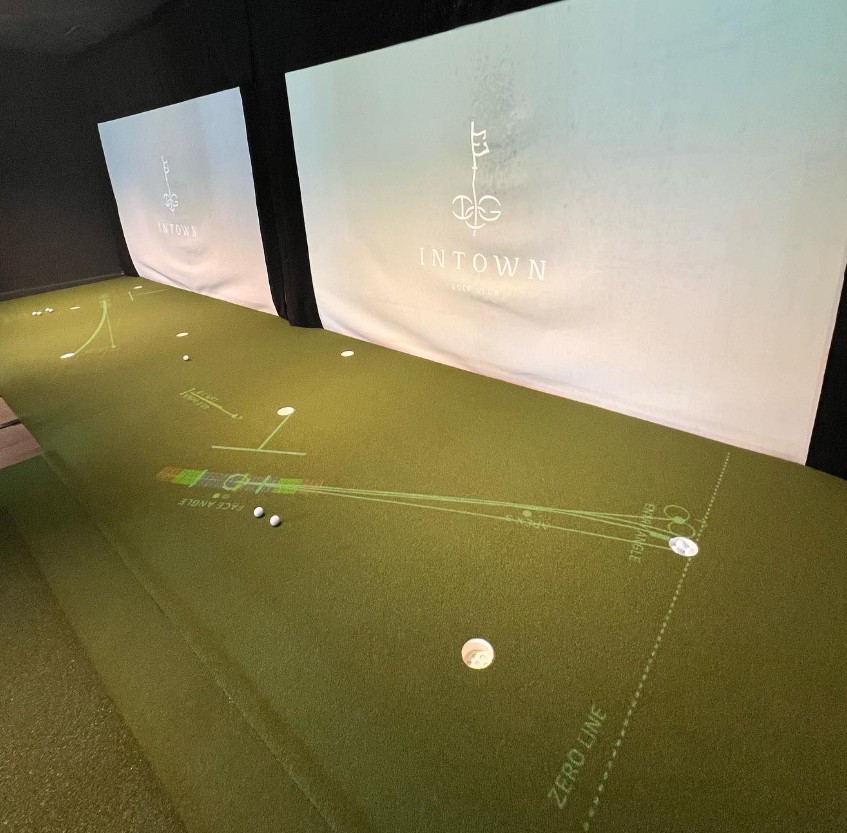
With this technology, indoor golf has become less about maintaining form and more about pushing performance to the next level.
Simulation and Virtual Competition
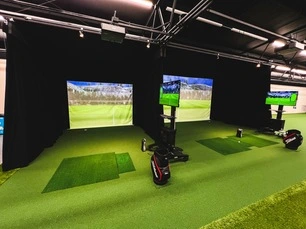
Perhaps one of the most exciting developments in indoor golf is the use of simulators. These allow players to virtually compete on famous courses from around the world, from Augusta National to St. Andrews, without ever leaving campus.
Players can practice course management, shot shaping, and situational play in a highly immersive environment with hyper-realistic visuals and real-time data integration.
Some college golf teams even use simulators for intra-squad competitions, qualifying rounds, or remote matches against other schools, adding a competitive edge to indoor sessions that previously lacked it.
Multi-Use Spaces for Complete Player Development
Today’s indoor golf facilities often go far beyond hitting bays. Many include strength and conditioning areas, recovery rooms, team lounges, meeting rooms, and even study spaces. This reflects a broader shift toward complete athlete development, focusing on golf skills, fitness, mental training, and academics.
James Madison University in VA (below) had us design and build a multi-sport indoor facility that houses golf, softball, baseball, and archery in one shared space.
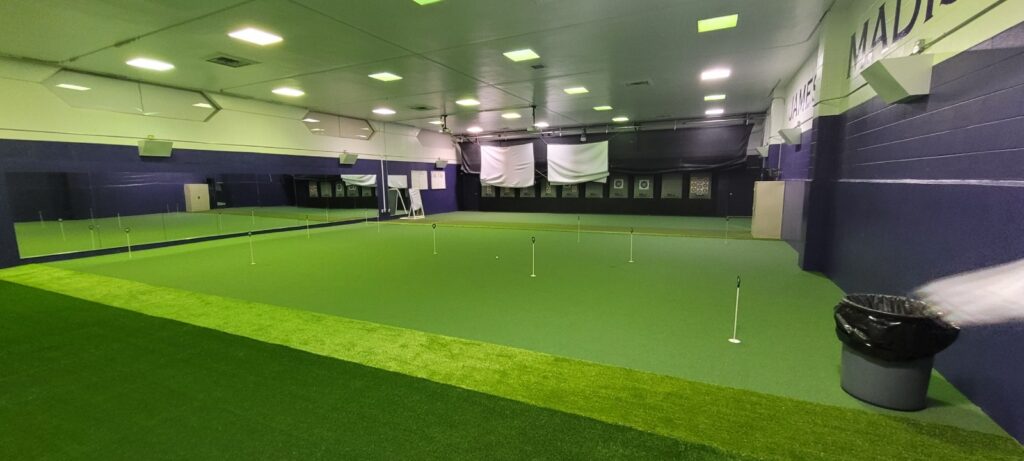
Strength training explicitly tailored for golf has become a crucial part of player development. With access to weight rooms and sports performance trainers, athletes build stronger, more resilient bodies capable of withstanding the rigors of a long competitive season.
Recruiting and Program Prestige
Indoor golf facilities have also become a major recruiting tool. Prospective student-athletes, especially those from regions with harsh winters, now consider indoor training amenities as part of their decision-making process.
For coaches, having a top-tier indoor space sends a clear message about the program’s commitment to excellence. It also allows for more structured practice and individual coaching sessions, which can be a big selling point to incoming recruits.
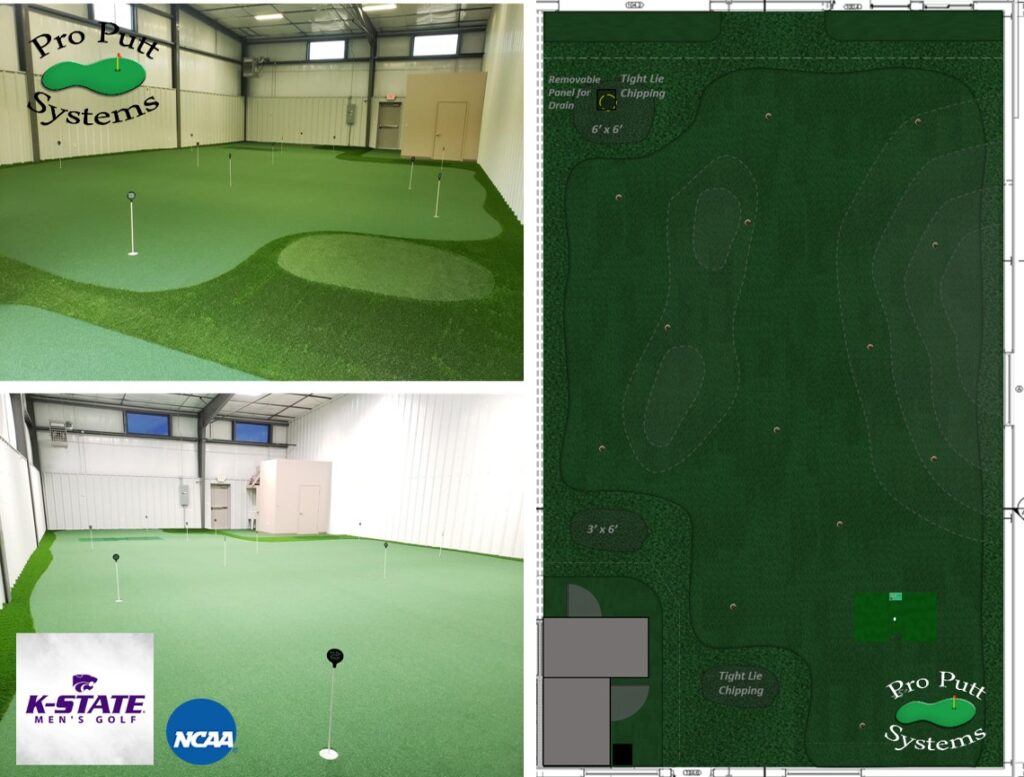
Schools like Kansas State (above), Oklahoma State, the University of Illinois, and the University of Alabama have all made headlines with state-of-the-art golf complexes that rival those used by PGA professionals. These investments not only enhance performance but also elevate the prestige of the program on a national level.
Accessibility and Growth of the Game
While most indoor golf facilities are built primarily for varsity teams, some colleges are beginning to expand access to club teams, recreational players, and the broader student body. This helps grow the game among casual players and provides more inclusive opportunities for all students to experience golf in a low-pressure environment.
By breaking down seasonal and skill-related barriers, these spaces introduce more people to the game, creating a pipeline of future golfers and fans.
Looking Ahead
The future of college golf is increasingly digital, data-driven, and indoors. As technology continues to evolve, we can expect even more immersive training environments, including AI-assisted coaching, augmented reality simulations, and enhanced biomechanics tracking.
But at the heart of this indoor revolution is a simple goal: to give student-athletes every opportunity to succeed. Whether it’s making the perfect putt in a pressure situation, gaining a few extra yards off the tee, or simply staying sharp during the off-season, indoor golf facilities are helping today’s collegiate golfers reach their full potential.
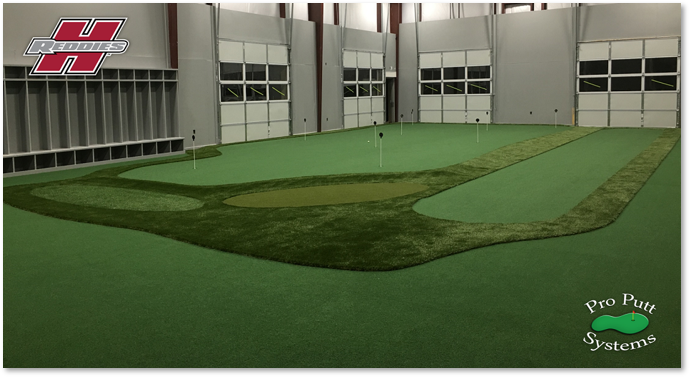
As more schools invest in these spaces, it’s clear that indoor golf is not just a passing trend; it’s a competitive advantage and a permanent fixture in the modern college sports landscape.
Are you a College Coach or AD and thinking about upgrading your indoor golf facility?
Reach out, and we’ll set up a consultation.

